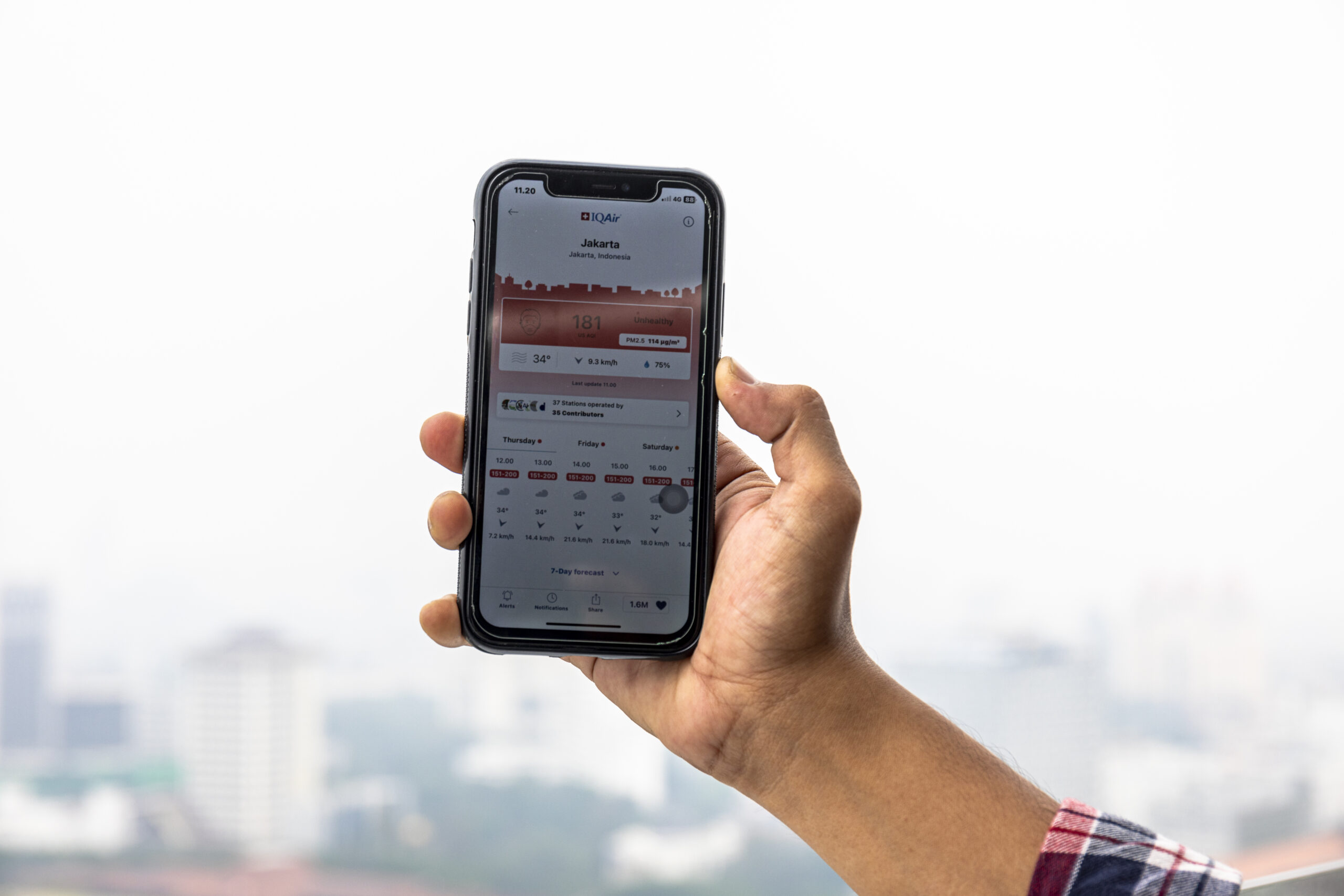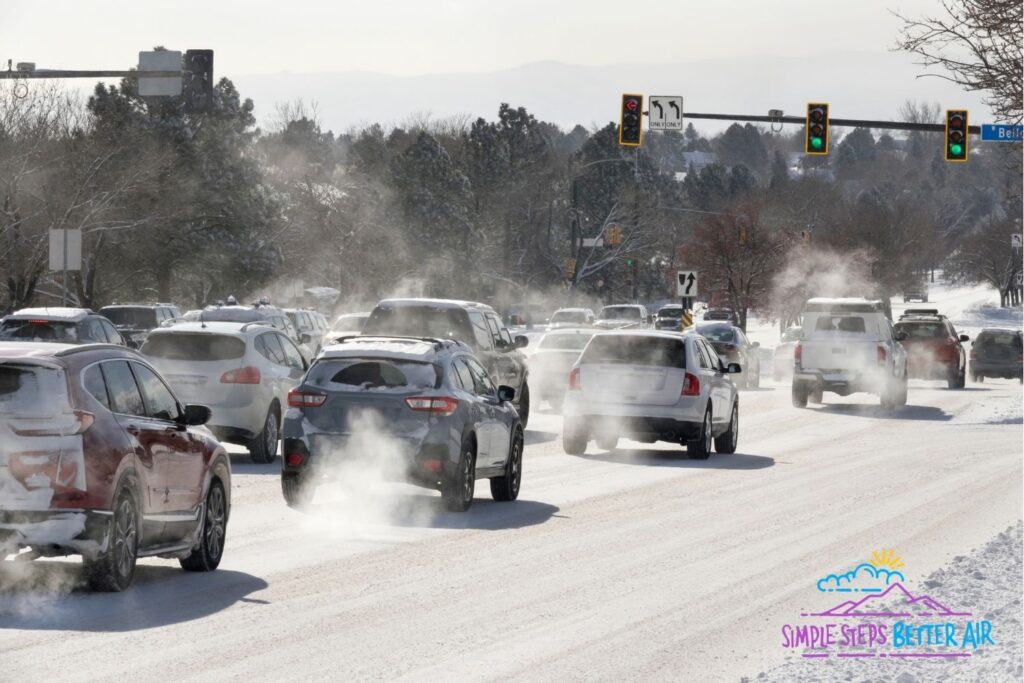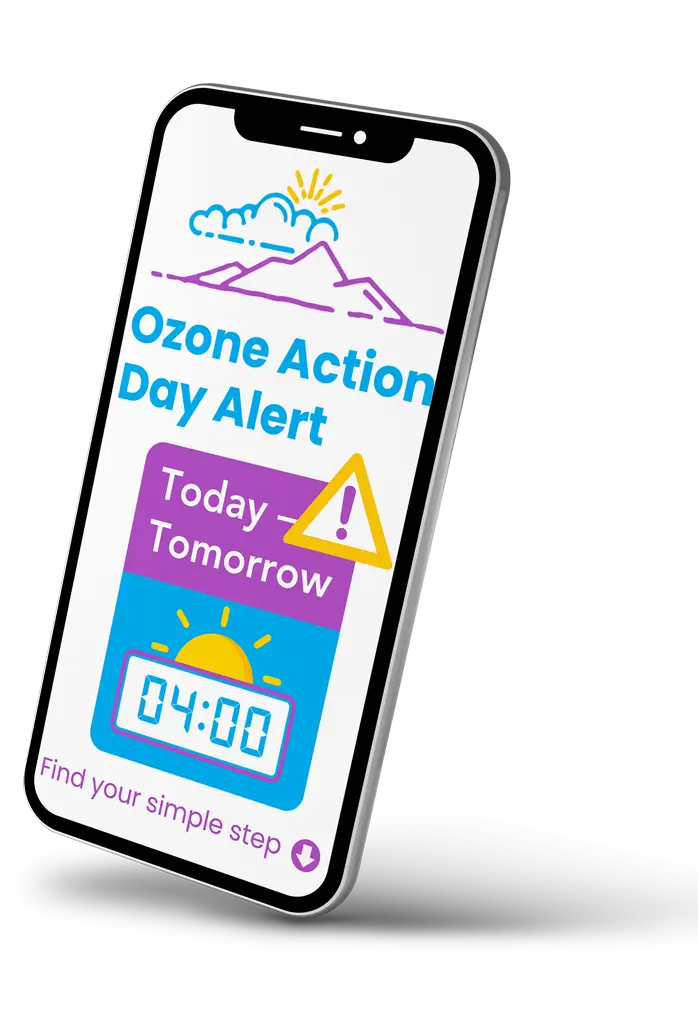Everything we do at Simple Steps. Better Air. is aiming for cleaner air for Coloradans. But everything we do here in Colorado also contributes to the much larger picture of clean air and better health outcomes around the globe.
Stagnant air can let ground-level ozone build up during the day, like we often see on hot summer days on the Front Range. But air doesn’t always stay put! As we’ve seen this summer, particulate matter (PM) from wildfires in western Colorado can easily worsen air quality on the Front Range, or PM from wildfire smoke in Canada can drift into the mountains and plains to create hazy skies and hazardous conditions for our health. Air pollution can even travel across oceans, so it’s truly something that affects us all.
To raise awareness of this global health issue, the United Nations is celebrating International Day of Clear Air for Blue Skies on Sept. 7 — also known as World Clean Air Day. We’re proud to know that the simple steps so many Coloradans are taking contribute to better air quality here and everywhere!
What to know about the health impacts of air pollution
Whether it’s from high PM or ozone, poor air quality has serious consequences for our health. According to the State of Global Air Report, air pollution was responsible for 8.1 million deaths around the world in 2021, and 99% of the world’s population is exposed to harmful levels of PM2.5, small particulate matter that can be inhaled deep into your lungs and enter your bloodstream.
Particulate matter air pollution is linked to heart and lung disease, stroke, cancer, and respiratory diseases such as pneumonia. Particulate matter comes from a variety of outdoor and indoor sources, such as vehicle emissions, industrial processes, road dust, smoking, cooking, wood-burning, and wildfire smoke.
Ozone pollution, which is our main air pollutant on the Front Range, also impacts our health. Ground-level ozone, which is invisible, forms when volatile organic compounds and nitrogen oxides interact with sunlight and warm temperatures. It aggravates lung diseases and is associated with an increase in asthma attacks, respiratory infections, and heart attacks and strokes.
Who has the worst air pollution?
Swiss company IQAir puts out an annual report on the worst air quality in the world based on its global network of air quality sensors. In its most recent report (for 2024), 15 of the 25 cities with the worst air quality resulting from high PM2.5 were in India, followed by Pakistan, which had seven cities in the top 25. Cities in Kazakhstan, Chad, and China were also in the top 25 of the world’s most polluted cities list.
Why is the air pollution in India and Pakistan so bad? Research has found that emissions from transportation, construction, industry, open waste fires, and cooking and heating fires are all contributors to the region’s air quality problems. Geography and weather patterns also exacerbate the build-up of emissions: Mountain ranges can help hold pollution in place, and seasonal temperature inversions can trap pollution at ground level. Crop stubble burning, which farmers in the region use to transition quickly from harvesting rice to planting wheat each fall, contributes to a predictable seasonal increase in PM as well.
In the New Delhi metropolitan area, air pollution measures on high air quality index (AQI) days include cancelling school, asking companies to allow only half of workers to come to the office, and keeping certain trucks off the roads.
Where else is ozone pollution a problem?
Denver, Los Angeles, and other cities in the Western U.S. are known to have issues with ozone pollution. But ground-level ozone is a global problem. A State of Global Air report found high ozone in countries in the Middle East, South Asia, and Korea. The same report noted that people living in Ethiopia, Brazil and Democratic Republic of the Congo had the fastest-increasing ozone exposure.
In another study, analysis of ozone pollution in European cities put four Italian cities at the top of the list. In South America, air quality tracking has lagged historically from a lack of sensors, but recent research is examining the causes of seasonally high ozone levels in cities such as Bogotá, Colombia, and Santiago, Chile.
In Colorado’s nine-county EPA nonattainment zone, we know that the three biggest contributors to ozone pollution are emissions from oil and gas operations, gas-powered vehicles, and gas-powered lawn equipment. Since reducing emissions from these sources also happens to reduce the greenhouse gas emissions that cause climate change, improving our air quality also lessens our contributors to climate change. It’s a win-win!
What can I do to improve air quality?
There’s actually a lot you can do to help our air quality! Here in Colorado, you can walk, bike or scoot to work or school with your kids, or take public transportation. You can stop idling your car when you’re parked. You can electrify your lawn and garden equipment to get rid of the pollution happening right outside of your home. (Learn more about battery-powered lawn and garden equipment discounts here.) You can upgrade your vehicle while you still have time to take advantage of the EV tax credit before it runs out. And you can combine trips when you’re running errands — or just work from home.
All of these steps help a little bit, and they add up to cleaner air for everyone – both here in the Colorado Front Range, and around the world.

Jenn Fields
Communications Contributor
Regional Air Quality Council




